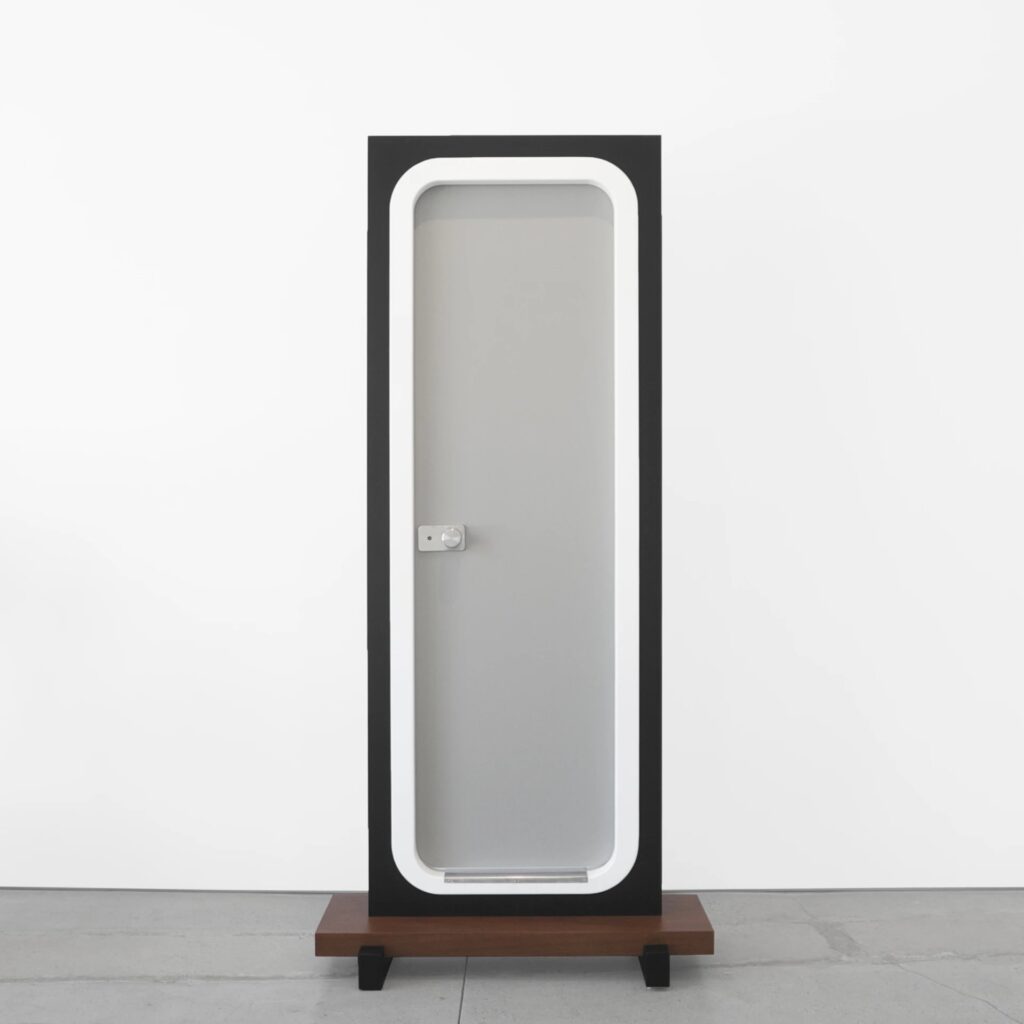
“I discovered the work of Jacques Barsac when he had just written and directed a set of television films on Le Corbusier, on the occasion of the architect’s centennial. Such an amazing montage of vintage footage, location shots, and digital reconstructions, which were then in their infancy. Since then, Jacques has deployed an amazing energy at organizing Charlotte Perriand’s archive, producing fundamental works of reference that have reshaped our understanding of this designer’s contribution to modernity… He has curated memorable exhibitions documenting manifold aspects of her œuvre.”
Jean Louis Cohen, French architect and historian
Everyone who attended my talk with Jacques Barsac this week, knew that it was a once-in-a-lifetime experience. One we will all remember forever. When award-winning documentary filmmaker Barsac first met Charlotte Perriand (1903-1999) in the 1980s, while working on a documentary on her mentor and long-time collaborator Le Corbusier, he could not have known that this encounter would completely shape his life. Barsac not only went on to marry Perriand’s daughter, architect Pernette Perriand-Barsac, but also authored many books on the French modernist—including the lavish 2014 catalogue raisonné, Charlotte Perriand: Complete Works, Volumes 1-4. Most recently he co-curated Charlotte Perriand: Inventing a New World at La Fondation Louis Vuitton, where nine of her most iconic interiors were recreated. Perhaps most importantly, he has in partnership with his wife organized and directed the Perriand archive for posterity.
Barsac has been instrumental in the preservation of Perriand’s legacy, so I was beyond proud to host him in this week’s Collecting Design: The Legends. In this rare, fresh, and candid appearance, he shared both known and unknown anecdotes from Perriand’s stunning, seven-decades-long career.
Certain facts about Perriand are well known: that she is considered one of the heroes of the modern movement, a revolutionary who approached design as a tool of social change, and that she began her career at the atelier of Le Corbusier, where she was responsible for creating a series of furniture in tubular steel. She was an architect, artist, furniture designer, and an interior designer, whose life spanned the entire 20th century. While there are several distinctive chapters in Perriand’s work, Barsac says that none was better than the other; none produced anything less than super innovative, original design of excellence. Each series of successful endeavors composed a fascinating evolution of a super creative and inventive character.
Much of Perriand’s success, I think, was due to her unwavering loyalty to the modernist paradigm, even when it fell out of vogue in the 1970s and ’80s. She remained committed to her fundamental values; unlike many architects of her generation, she disliked the new waves of postmodernism and disapproved of its tendency toward historical revivalism. According to Barsac, she had no interest in “vintage.” She never looked backward, only forward. Perriand’s struggle as a woman working in a male-dominated field was illuminated in her autobiography Charlotte Perriand: A Life of Creation, which she published at age 95. She was not a part of a partnership, nor a wife, but a sole practitioner forging her own way from the very beginning. She was disappointed, Barsac said, to lack a true editor, a producer that would help her bring her endless ideas for furniture design to reality. It was a constant battle that did not change when she began working with gallerist Steph Simon, who became the key Parisian platform for her furniture and interiors during the 1960s. He did not have the budget for production, and his business suffered economically. The only example the two brought into large-scale production was a plastic drawer, a blockbuster that sold 60,000.
Nonetheless, despite the struggles, Perriand forged an enormous career that grew out of her own principles, lifestyle, and efforts. She was not motivated by creating a legacy, but in the end her work has been exalted and highly collected since the 1990s. Merging simplicity with sophistication—a Japanese sensibility with French chic—her furniture designs today regularly fetch six figures and constantly make headlines in the international marketplace. They have become hard to find, topping lists of blue-chip mid-century top sellers, the preferred choice of major international collectors, such as billionaire Bernard Arnault and architect Alan Wanzenberg. The collectors, Barsac admits, have been crucial to her legacy. Before the market was developed, it was not unusual to see Perriand’s furniture thrown to the sidewalks of Paris, unrecognized and unvalued.
Barsac spoke about Perriand’s passion for Japan. As a lover of Japanese culture myself, I found her travels to Japan (which are described in detail in her autobiography) inspiring, revealing the process by which she was able to adapt Japanese principles in the creation of French design. I found the way she discovered Japan to be magical. When Perriand arrived there in 1940, Barsac explained, she was so overtaken by what she saw that it impacted the way she designed for the rest of her life. She was impressed by the traditional buildings, by the lifestyle, the tea ceremonies, the ceramics, and the concept of mingei (folk craft). When she met architects who sought to depart from all of that, she was shocked. In her groundbreaking show The Synthesis of the Arts at the Takashimaya Department Store in 1955, she could finally show the Japanese what she learned from them, showcasing the best of the best in French art and design.
Perriand is no longer overshadowed by her male peers like Le Corbusier, Pierre Jeanneret, and Fernand Léger. She is recognized as one of the most important designers in history, a powerhouse. Talking about this amazing female creator with Barsac was the best way to celebrate International Women’s Day.
This article was published today in Forum Magazine. Above: Sideboard by Charlotte Perriand, 1958. Photo © Jousse Entreprise



